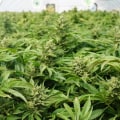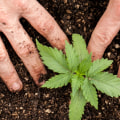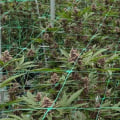The process by which cannabis flowers are produced.
cannabis cultivation
is a term that refers to the cultivation of cannabis, whether in a commercial facility or in a family garden. Cannabis cultivation can be done outdoors, but it is much more likely to be done indoors in a hydroponic environment (without soil). Organigram's operation stands in stark contrast to the image of an illicit farm hidden in the forest.It is completely indoors, with 52 identical grow rooms spread over three floors. Plants are propagated by cloning, rather than growing from seed, so the genetic identity of the crop remains the same from generation to generation. Growers track and record all crop parameters and then modify them as needed to maintain consistency. Purcell sees the company's operation as a “manufacturing plant,” rather than a garden or greenhouse.
Cultivation license holders cannot sell or distribute cannabis to the general public (recreational cannabis) or directly to medical patients (medical cannabis). Cannabis growers use fertilizers with a high nitrogen and potassium content during the vegetative stage, as well as a complete fertilizer with micronutrients. Each stage of the cannabis cultivation process requires its own unique demands, including different levels of light, water and nutrients. In addition to the challenges of growing a sufficient quantity of high-quality cannabis for a rapidly growing market, cannabis companies have to deal with something that illegal growers do not regulate by the government.
Brick weed is a method of curing and packaging cannabis cultivation that involves drying the bud for a short period, if at all, and pressing it with a hydraulic press, compacting the entire plant (bud, stems and seeds) into a brick, hence the name brick grass. In addition, cultivation license holders can sell seeds and plants, not dry or fresh cannabis, to provinces, for the sale of recreational cannabis. The emphasis on advanced cultivation techniques, as well as the availability of hybrid strains (with names such as Northern Lights, Master Kush, NYC Diesel), is believed to be a factor in increasing the overall quality and variety of commercially available cannabis in recent decades. Allows cultivation of cannabis genetics, such as clones and seeds, in a maximum of 540 square feet.
Some theories suggest that it is possible to breed hermaphrodite cannabis selectively to express female bloom before male flowering occurs, although this type of selective reproduction is beyond the capabilities of most growers. Growing cannabis for industrial needs, such as manufacturing industrial hemp or for horticultural use, is legal in India. As with cultivation licenses, the sale of plants and seeds is also allowed to license holders who are authorized to sell cannabis for medical purposes and to those who can sell it under provincial or territorial law. But as legal medicine and, increasingly, recreational cannabis becomes more widespread, the cannabis industry becomes more professional.
Micro and standard grow licenses are designed for businesses that want to be able to legally grow, own, sell (wholesale, to certain parties) and research cannabis. An important factor when growing cannabis independent of photoperiod (not autoflowering) is selecting the best genetics for growing one.






